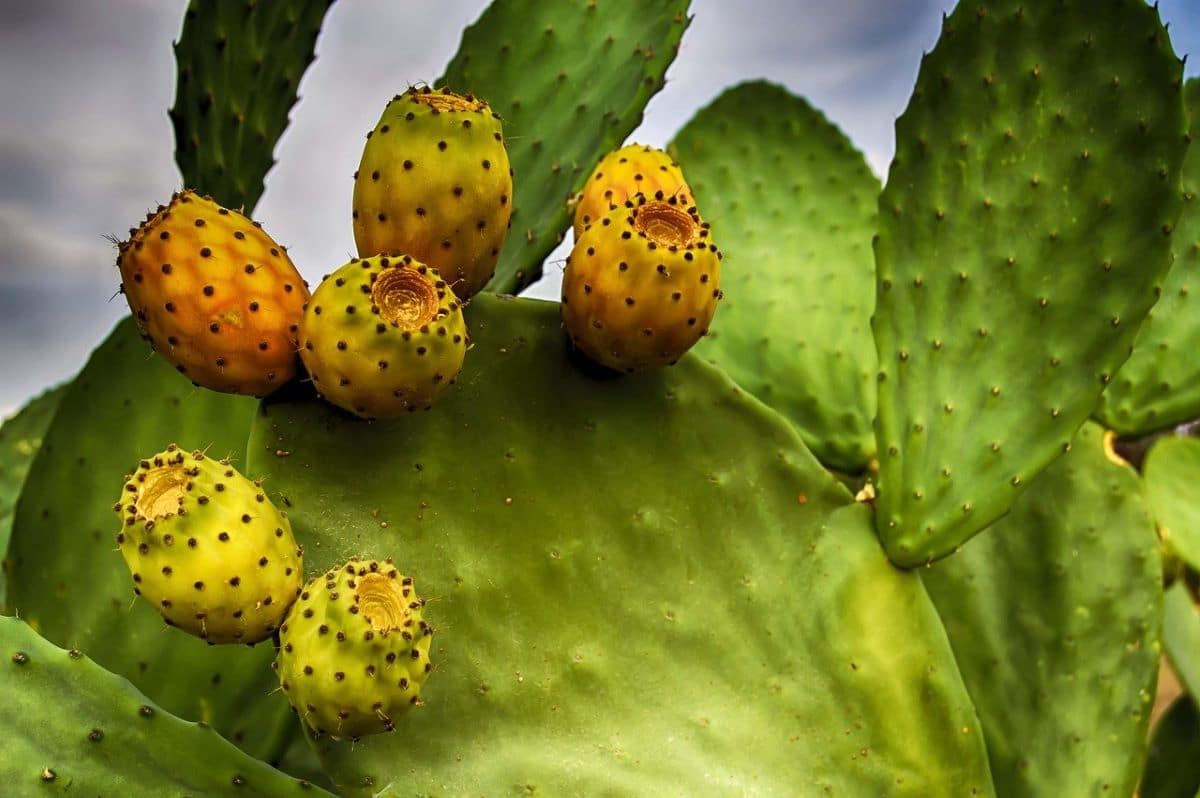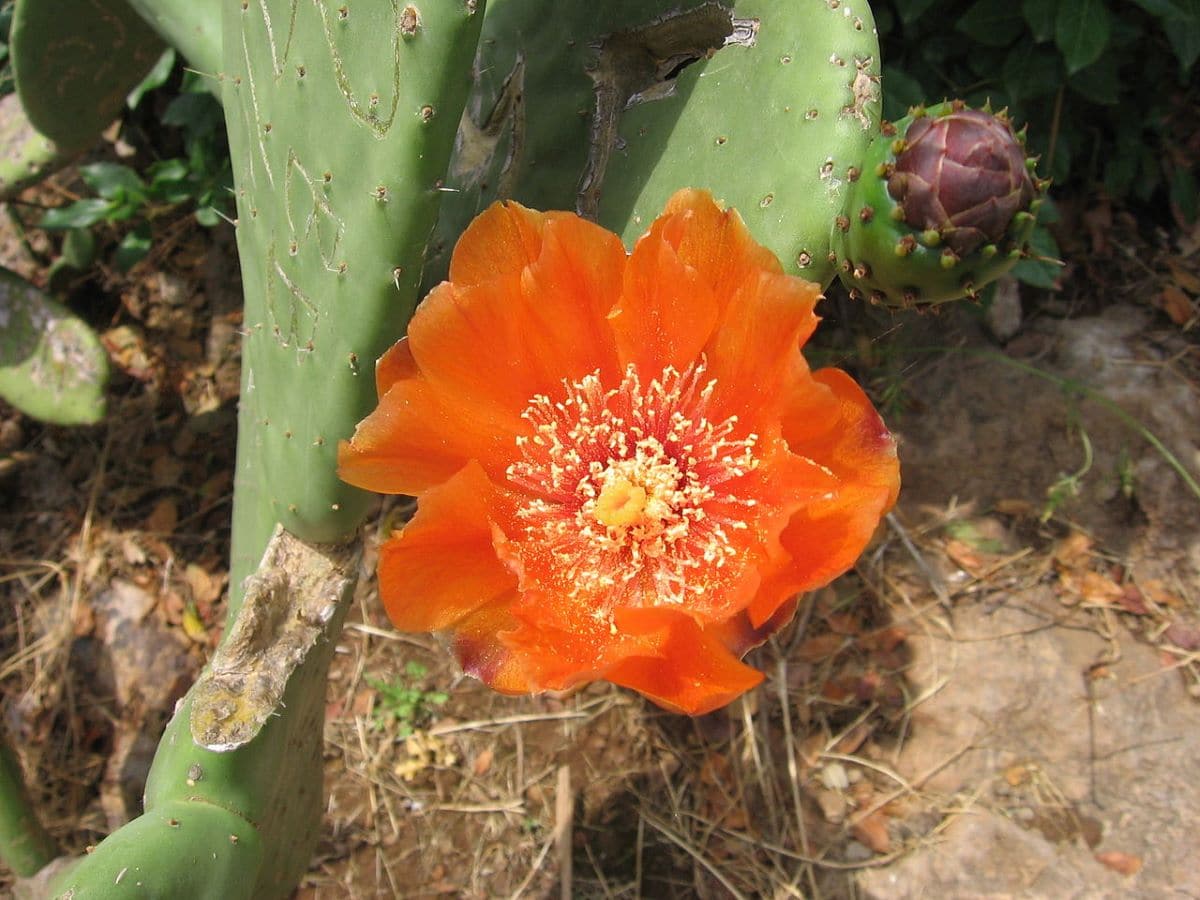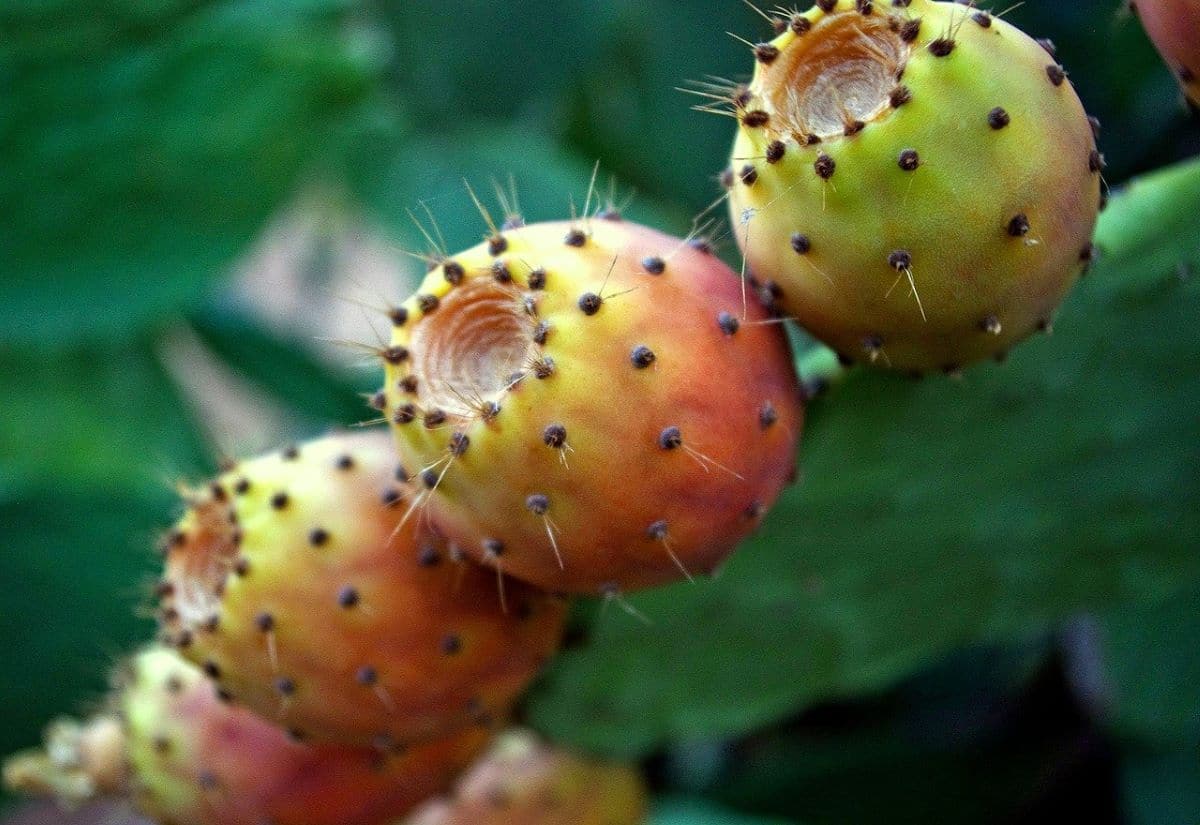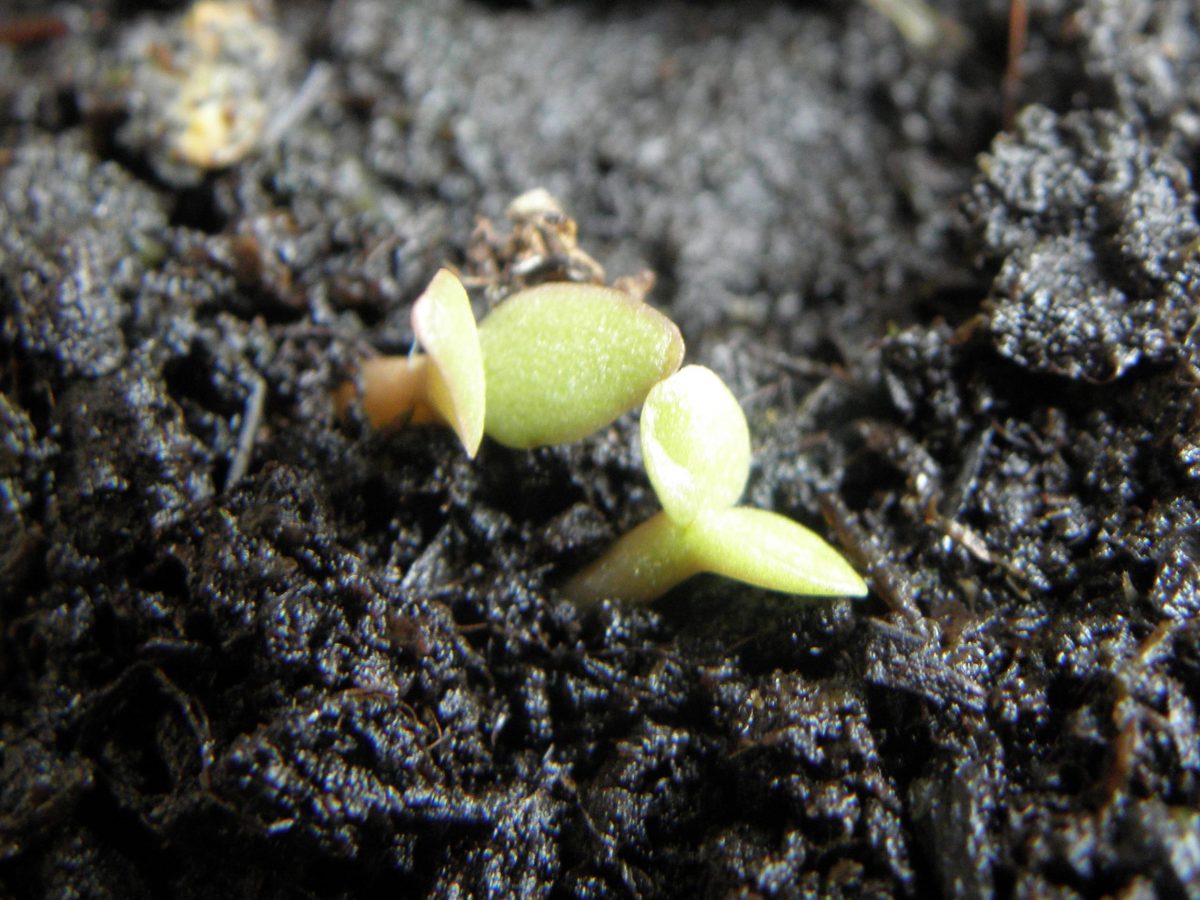
The prickly pear is a cactus that, although it is within the Spanish Catalog of Invasive Exotic Species, the cultivation of its fruits is allowed as it is a food resource as long as it is done in a private garden or orchard. For this reason, and because we think it is a very interesting plant, we are going to tell you how to germinate its seeds.
La Opuntia ficus-indica, which is how botanists call it, it is a cactus that is very easy to care for and maintain, capable of living with little water per month. So that, Would you like to know how to grow the prickly pear fruit?
Prickly pear cultivation
It is a cactus that can be multiplied by two different methods: by seeds, and by leaf cuttings. We will do this in spring or summer, otherwise it will be difficult for us to be successful since it is a plant that needs heat both to be able to germinate and to take root.
Sowing the prickly pear
If you want to sow seeds of the Opuntia ficus-indica, we recommend that you follow these tips:
When is it sown?
The prickly pear, despite being very resistant, also has its "weaknesses". One of them is that for their seeds to germinate they need a warm temperature, like the one in spring or summer.
Therefore, if we want to have a specimen and see it "born", it is important that we prepare the seedbed in one of the mentioned stations. In this way, they will be able to grow without problems.
How is it sown?
Once spring or summer comes, what we will do is the following:
- First, we will open a fruit and clean the seeds with water.
- Then, we will fill a seedbed (such as a tray with holes or a pot) with universal growing substrate mixed with perlite in equal parts and we will water.
- Then, we will put the seeds on the surface of the substrate and cover them with a -very- thin layer of substrate.
- Finally, we will water with a sprayer and we will put the seedbed outside, in semi-shade.
Thus, the first seeds will germinate in 2-3 weeks (or before!).
As soon as they do, we will see that they grow quickly, which is great if we want to plant them in the garden soon. Of course, we must be patient and leave them in the seedbed at least until they are about 10-15 centimeters tall.
Good planting!
Planting prickly pear cuttings
La Opuntia ficus-indica easily multiplied by leaf cuttings. It is the fastest way to get fruits, as it takes only a few years (2 or 3, depending on the climate, if it is in a pot or in the ground and the care it receives) to bear fruit from the time they take root. To do this, we advise taking into account the following:
When are they obtained?
Prickly pear cuttings They have to be taken in spring to plant them shortly after. And, unlike other types of plants, cactus cuttings root better if they are planted once the wound has dried, for which they usually take about a week.
During that time, we have to leave them in a dry area, and indoors so they don't get the sun directly, because if they were given they would burn.
How are they planted?
It is important that are planted straight, with the narrowest part buried. They can be kept in pots or in the ground, although we recommend planting them in containers for at least that year, so that they can develop a good root system.
The earth has to be very light and allow the excess water to come out quickly. For this reason, if they are to be kept in a pot, it is preferable to use pumice or a similar substrate such as akadama; and if we choose to plant them in the ground, we will make a hole of about 40 x 40 centimeters and fill it with a mixture of garden soil with perlite (for sale here) in equal parts.
Prickly pear care guide

Image - Wikimedia / Canaan
The prickly pear is a very fast-growing cactus that hardly needs any care. But in order for it to be able to give many fruits it is important that its basic needs are taken into account:
- Location: we will place it in a sunny place, except if it is a newly planted cutting in which case we will place it in semi-shade until we see it growing.
- Earth:
- Pot: pumice, or mix peat with perlite in equal parts. Also, the pot must have holes in its base.
- Garden: it is not very demanding, but it is preferable to plant it in well-drained soils as it fears waterlogging.
- Irrigation: it must be scarce, allowing the land to dry between one watering and the next.
- Subscriber: not necessary if you are in the garden. If it is in a pot, it will be highly advisable to fertilize it in spring and summer with liquid organic fertilizers such as guano.
- Pests: it is very vulnerable to the attack of mealybugs, which appear in spring-summer. Its treatment consists of applying specific insecticides, or dusting the cactus with diatomaceous earth (for sale here). The latter is a natural insecticide.
- Rusticity: supports frosts down to -4ºC.
What are the benefits of prickly pear?
So far we have talked about cultivation, but did you know that prickly pear fruit has many benefits for our health? In fact, it is perfect for when you have constipation, to prevent diseases of the cardiovascular system, as an antioxidant and even to lower cholesterol.
As if that were not enough, it is low in calories, containing only 40 kcal per 100 grams. What's more, it is rich in vitamin C and minerals, such as calcium, phosphorus and potassium.
How do you eat prickly pear fruit?

It is possible to eat it freshly picked from the cactus, for example, opening it in half and scooping the pulp inside with a spoon. Other ways to consume it in sandwiches or sandwiches, but you can also prepare delicious salads or soups with it.
What happens if you eat the seeds of the prickly pear?
Nothing bad, I assure you. The seeds are very small, so they can be swallowed without problems. What's more, They will help us reduce cholesterol, relieve pain caused by ulcers and have a good digestion.
So, do you dare to have your own prickly pear plant?

Beautiful page, you can see the love towards plants, I found this page by chance and now I'm reading all about seeds, keep up the good work, you have a new follower, this will help me control my bad mood and stress
Hello Andres.
Thank you very much for your words.
We love gardening and we love to transmit our knowledge on this blog, and if what we do is also of interest and / or of use to someone ... without a doubt our effort will have been worth it.
Greetings.
The explanation is very simple and didactic. Thanks
Thank you very much, Juan Carlos.
In the United States which is the universal growing substrate mixed with perlite.
I got to this page thank God; Well, I am just reading about the nopal or prickly pear in Chile, and I want to make a plantation and thank you because with your page and explanation it is very clear to me and I will follow them because they are very useful
Hello Maria.
Thank you for your comment. We are glad that you liked the article.
Regards!
Excellent information to get a good diet, both in the fruits and in the nopal, which are so healthy.
Thank you very much Julieta.
Can I put a whole prickly pear in a pot?
Hi B.
It is a large plant that you can have in a pot for years, but over time it will be better if it is in the ground.
Regards!
How long does the prickly pear last after being harvested if I want to take family members?
Hi, christian.
It lasts a long time, but it depends a lot on the weather. That is to say: the higher the temperature and / or humidity of the environment, the faster it will rot.
But I can't tell you exactly how many days, I'm sorry. But boy, maybe two weeks.
Greetings.